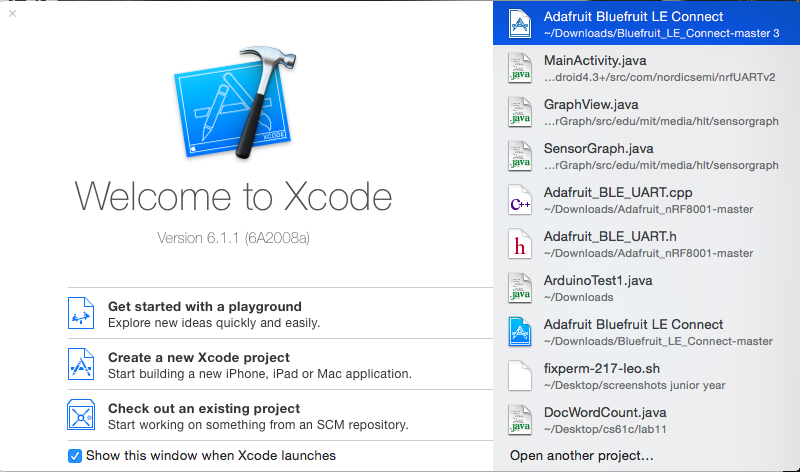Using Javascript in Your IOS App
by IoTalabs in Circuits > Mobile
881 Views, 7 Favorites, 0 Comments
Using Javascript in Your IOS App

We are IoTalabs and we are a group of Internet of Things enthusiasts that love hacking together different devices. We've been working on many projects (check out our current project http://doteverything.co/) and we wanted to share our experience with integrating JavaScript and Objective-C! In particular, this guide will teach you how to have Objective-C callbacks for JS functions.
The guide will assume that the reader is already familiar with the fundamentals of Objective C/JavaScript/Object Oriented Programming. Let's get started!
Required Experience and JavaScript Alerts

Before we begin, we assume an understanding of the following things:
javascript - beginner
iOS and Objective C - intermediate
If you have questions at any point, feel free to comment. We put all the code in our images.
In order to trigger our Objective-C callback function, we will need to let the program know that the JavaScript function has completed. Since there is no built-in way for JS loaded into a web view to trigger callback functions in Objective-C, we are going to have to get creative.
In order to let the rest of our program know that we have the necessary data to move forward, we should trigger an alert in our JS function. The text included after the alert, "weatherDot" is also sent to our callback. This alert will translate into a call to a webview delegate method, although we never plan on displaying an actual alert. We are simply using the alert functionality to suit our callback purposes.
We'll see how this works in detail in the following steps, so for now just understand that setting window.location.href to an alert triggers a delegate method outside of our webview.
Creating Our Webview

In order to run JS, we are going to load a script into a web view. We never plan on showing the web view in the foreground, or on using it browse the Internet. Instead, we are going to load a JS string into into the view and run it.
Replace "file text" in the picture above with the scripting you are trying to run. You can hardcode it in, pull it up from a local file, or any other other source, so long as you input a valid JS string. Once you have called the loadHTMLString method with the proper parameters, you are ready to use JS methods!
Simply use the stringByEvaluatingJavaScriptFromString function and input a valid JS method call. For example, if the JS file you loaded into the web view contained the no-parameter function "helloWorld", you could call it with:
[jsLoader stringByEvaluatingJavaScriptFromString:@"helloWorld();"];
UIWebview Delegate Method

There are a myriad of reasons that the shouldStartLoadRequest method should be called, but in our case we want to focus on when we trigger alerts through JS. Whenever we trigger alerts in our JavaScript code, the above function will be called. For the remainder of the tutorial, we will be working with this method.
The request parameter will hold data about what the request contains (in this case we can access whatever string we included after our alert in the JS code). The NavigationType parameter will tell us the nature of what triggered the shouldStartLoadRequest method.
Identifying the Cause of Function Call

As mentioned before, there are a variety of reasons that this delegate method will be called. We want this code to run if and only if an alert is called, so we need to ensure that the method was not called for another reason. Firstly, we check the navigation type. The JS alert is a UINavigationTypeOther navigation type, so we check for this first. By first checking the navigation type, we can ensure there are no mixups based on other possible standard loads.
Next, we want to make sure that the URL scheme was an alert type. Under the umbrella of UINavigationTypeOther, there are still other types of load requests. Once these conditions are met, we can begin worrying about what we want to do with the alert.
The return values indicate whether or not we want to follow through with the load request. If we return yes, then we will go to an alert screen, and we don't want that. So, in the case of alerts we return no.
Now That We Know Our Data Is Ready....

Now that we know our data is ready, we can work with the JS. For example, if we posted the alert at the end of an asynchronous call, we know that the data is ready to be received. So with a weather Dot, after we have made a request to a weather API for information, we will trigger an alert when we have the data. Then, we can call another JavaScript method to instantly return the weather data as JSON.
Thanks for reading, and let us know if you have any questions!